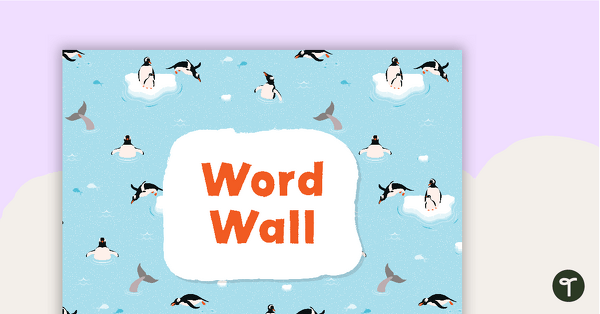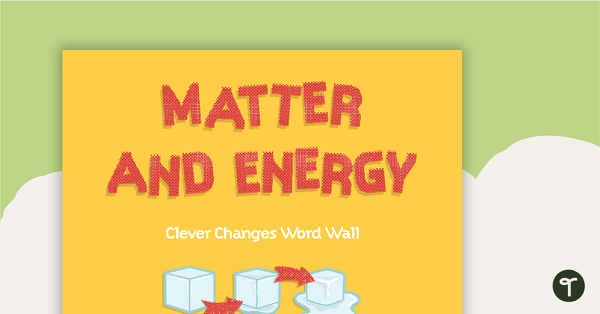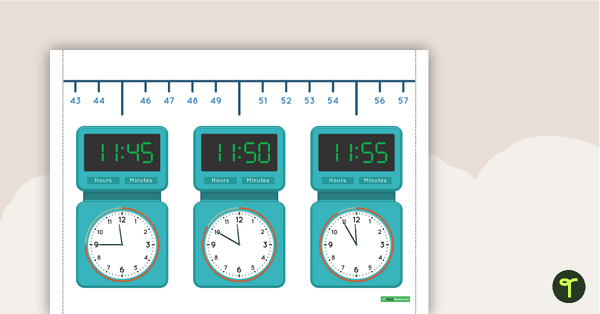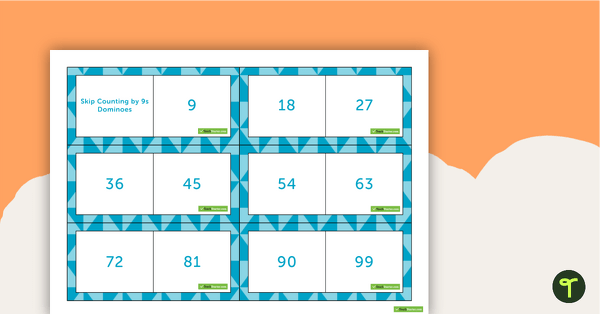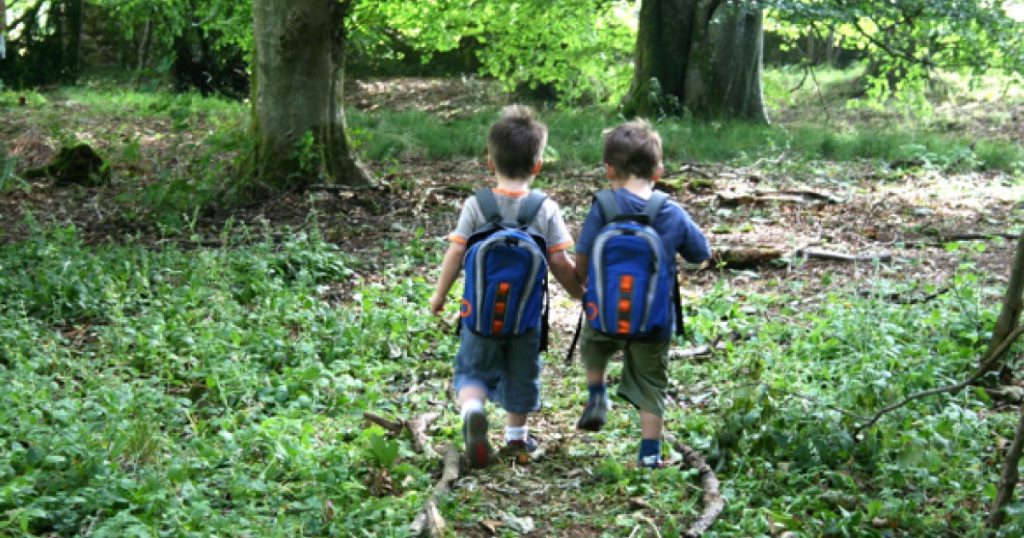Are you an upper elementary or middle school teacher looking out for some new drama teaching ideas? These theater games are perfect for students in grades four and up, and they incorporate important educational elements from ELA class, health class, and more, so they’ll end up supplementing their entire education! Bonus: They make great brain breaks for the traditional classroom too.
Oh, and did we mention that we’ve managed to make them fun? No, really, the teachers here at Teach Starter know kids … and we know teachers! We’ve dreamed up drama games that are as enjoyable to teach as they are to play.
The concept of this approach to drama for kids is quite simple: Take one familiar game or activity, the topic from a unit kids are currently studying, and turn it into a drama lesson!
With that in mind, here are eight drama activities for kids you can add to your repertoire straight away.
1. One Word Story
Create a whole-class story in this imaginative drama activity that is for practicing individual and group focus.
- Students sit or stand in a circle.
- Establish who will begin the story and which direction the story will travel (clockwise or anti-clockwise).
- The first person begins the story by saying a single word, e.g. “There.”
- Whoever is next in the circle says another single word that makes sense following the previous word, e.g. “was.”
- Continue around the circle, with each person saying a single word with the aim of building a coherent story.
When using this as a general drama activity, you could use one of the Teach Starter widgets as a prompt for the story. The Vocabulary Word of the Day spinner has dozens of word lists you could draw from, the Visual Writing Prompts Widget provide perfect One Word Story stimulus, and the Random Sentence Starter spinner is a really fun way to kick-start your students’ imagination!
Layer in Context:
Connect this drama activity to content from a unit, text, or topic your students are currently studying. Establish with the class a few broad “key features” the whole class story needs to have. For example, if students are exploring food and nutrition in a health unit, you could agree upon the following aspects of the story:
- a specific character or characters (e.g. a boy named Lashon, and a cookie that comes to life)
- a specific place (at Lashon’s house)
- a keyword or phrase (“Eat me!”)
It is important not to get too detailed when establishing the key features of the story (i.e. you might not articulate a specific problem or conflict that has to happen), as you want your students to be able to shape and guide the story in an imaginative way.
This activity can be played without context for a fun, classroom brain break that explores many of the elements of drama including situation, role, relationship, voice, tension, and mood (as the students will likely create a narrative that touches on each of these). Or you can use it as an imaginative way to reinforce key concepts from, and students’ understanding of, any topic you have been exploring with your class.
Use visual prompts such as cards from a relevant word wall, a projected avatar of the specific characters, or create some custom labels with the character names, words, and places that work with your current units.
2. Human Knot

shutterstock/rawpixel.com
Working collaboratively is a foundational skill for life and drama students too. This fun game helps students to build awareness and understanding of group work and is a great way to introduce the concept of ‘ensemble’ (a group that works together to create).
- Break students into small groups (4-6 students per group is a good start).
- Students form a circle in their group.
- Walking to the center with hands outstretched, students each grab two hands (however, it cannot be the person next to them, nor can they grab both hands from the same person).
- Students ‘untie’ their human knot, without ever letting go of any hands.
- When a group has finished untying their knot, the whole group sits down.
Encourage students to work slowly and carefully, with an awareness of how their movements affect others in the knot. Some knots are easy to untie, and others take a lot of communication and negotiation!
Increase the complexity of this ensemble-building game by asking students to complete it in silence, by making the number of students in each group larger, or by trying to untie a whole class knot!
3. Shazam!
An absolute favorite of mine, this is a drama game for kids that works with a concept similar to “Rock, Paper, Scissors.” It is fantastic for exploring role, voice, movement, tension, and focus. In “Shazam!” the three characters and parameters of play are:
- wizards beat knights by casting a magic spell over them
- giants beat wizards by stomping on them
- knight slay giants with their magic sword.
Students enact each character in the following way:
- wizards step forward with one leg, push both hands forward as if shooting a magic spell through their hands, and shout “Shazzam!”
- giants stamp their feet and say “Fee! Fi! Fo! Fum!”
- knights pull an imaginary sword out of their belt and shout “En garde!”.
Play “Shazam!” as a whole group game, following these directions:
- Split students into two even groups, standing in two parallel lines.
- Have the groups face towards the center of the space.
- The teacher counts down from ten to zero.
- Each line quickly huddles in a group and decides which of the three characters they will be during this round.
- By the count of zero students must have returned to their straight line, facing their opponent line.
- On zero each line enacts their chosen character and the ‘winning’ line is decided by the above parameters (wizards beat knights, giants beat wizards, knights slay giants).
Play round after round, keeping the pace up and keeping a tally of each team’s number of winning rounds. The first team to ten are the winners!
Layer in Context:
To adapt this game take elements, concepts, characters, or ideas from any topic and create three “characters” and parameters that suit.
Specifying characters from a familiar narrative explored in ELA class will encourage students to use voice and movement to create a role. It will also explore the relationship between the characters. The game itself requires both group and individual focus, and creates amazing tension!
If in science class students are learning about renewable energy, students could be the sun (standing like a star jump and saying “Ahhhh!”, a solar panel (standing stiff like a board and “buzzing”), and electricity (arms outstretched towards opponents and saying “zap!”). In this version,
- The sun beats electricity because it is renewable.
- Solar panels beat the sun by capturing its power.
- Electricity beats solar power by using its power.
4. Zip, Zap, Zoom
Speaking of zaps, “Zip, Zap, Zoom” is another great collaborative game that teaches focus. Students “pass the energy” around a circle, using action and a variety of vocal commands. In the traditional game, students stand in a circle and send the energy around the circle saying either Zip, Zap, or Zoom.
- “Zip” sends the energy in a clockwise direction
- “Zap” sends the energy in an anti-clockwise direction
- “Zoom” sends the energy to someone across the circle
- Students cannot do more than one Zap or Zoom in a row (they must be broken up by a Zip)
Every command is done with an action, the easiest being to clap and point to the person the energy is being sent to.
5. Twenty-One
“Twenty-one” is one of those drama games that get even the most fidgety of students concentrating with laser focus.
Sitting in a circle, students attempt to count to 21 in a random order, without two or more people speaking at the same time. One person begins by saying “one”, then another person says “two.”
Continue the group count until you reach twenty-one. If more than one person says a number at the same time, the count begins again.
Change the Content:
This game can be used with any familiar content that has a sequence. For example:
- skip counting (e.g. threes, sixes, eights, etc.)
- using the alphabet
- musical scales or “Do Re Mi”
- counting in intervals with units (e.g. in tens, and dollars/cents 10¢, 20¢… $1.20).
6. Body Sculpture Olympics
Also known as “10 Second Object”, this activity gets students to use their bodies to create freeze frames (like a real life frozen image) that depict an object or a situation. Use this activity to talk about how we can communicate meaning through movement.
- Break students into small groups.
- Call out an object or scenario (such as the North Pole, peacock, at the beach, washing machine, etc.)
- Count down from ten to zero
- While you are counting down, students have to create the object, character, or situation using their bodies.
- When you reach zero, shout “Freeze!”
- Give each group a thumbs up or thumbs down depending on if they have represented the stimulus in a way that makes sense.
- Continue, keeping the pace up to ensure students are engaged and thinking on their feet!
You can decide on a “scoring” method that feels right for you (such as giving scores out of ten or choosing one winner per round), or you may prefer not to “score” at all, and just use the activity as a confidence and group awareness building exercise.
Layer in Context:
“Body Sculpture Olympics” can be adapted as a drama activity linked to most any content at all. Simply create a list of characters, situations, or objects that are related to a familiar topic. Or better yet, let the students create the lists.
This activity means students use movement and space to establish a dramatic meaning (they communicate situation, role, and relationships through their frozen image).

shutterstock/Sergey Niven
7. The Expert
This activity is great for older students, using both their prior knowledge of a topic and their imagination. It requires students to use role, relationship, situation, voice, and movement to create dramatic meaning.
- Break students into small groups (3-4).
- Allocate a letter to each student within the group (i.e. every group will have a person A, person B, etc.).
- Call out the letter of the person who will be ‘The Expert’ first.
- Announce the topic that the Expert specializes in.
- The Expert must speak with authority about the topic for an agreed amount of time (e.g. 30 or 60 seconds).
- The teacher counts down from three to begin the time and calls “Stop!” when time is up.
- The teacher then announces which letter/person will go next, and the new topic of expertise.
What makes this game extra fun, is that there is only one rule – the expert can never stop talking, even if they run out of facts well before their time is up. Students should just keep talking, making up anything at all about the topic, no matter how absurd or far-fetched.
Not all drama is based on fiction! This activity is a great way to explore how drama-makers (playwrights, actors, dramaturgs, directors, set, and costume designers) can play with the ideas related to a “real” topic in order to create an artistic, symbolic, absurd, or stylistic representation of it through Drama.
Variations:
- Play as a whole class with one Expert up at the front.
- Allow the “audience” to ask questions of the Expert to help prompt them if they get stuck.
- Create a panel of Experts, with two or three students in front of the class discussing their topic of expertise.
- Add simple props or costumes such as a coat, glasses, or other items to help students with their “expert” characterization.
Layer in Context:
- Have each student in the group play a character from a text or narrative they know. Give a situation from the text as a prompt for the character to talk about for their allotted time.
8. Mirror, Mirror
In this activity, your students will continue to build confidence in using their body (movement) to create a role and communicate meaning.
- Students break into pairs.
- Allocate, or let students decide who will be A, and who will be B.
- On the teacher’s signal, student A begins to move very slowly.
- Student B has to copy the movement exactly as if they are the reflection Student A sees in a mirror.
- Continue for some time, and then swap, having Student B lead Student A.
Encourage students to move slowly, with the aim being that anyone watching the pair wouldn’t be able to tell who is leading the movement and who is following.
Layer in Context:
Add complexity to this activity by layering in one or more elements of context. This turns “Mirror, Mirror” into a tool for exploring the content from another key subject area in a completely different way – a fantastic way to cater for kinesthetic, social, verbal, and auditory learners.
- Role – Ask Student A to take on a specific role or character. This can be from a familiar text or can be any role from a relevant context, such as a scientist or a construction worker.
- Situation – Specify the situation that Student A is in, for example setting up an experiment, or building a new road.
- Time & Place – Give students details about a specific time or place in which they are – this will change the actions and movements they enact.
- Atmosphere – Explore this more challenging element of drama by providing students with a mood or emotion as a prompt for their movements.
You can add just one of these contextual elements, or multiples – each will support students in the creation of different moments of dramatic meaning.
There you have it! Eight more ideas to help you think about Drama for kids.
There are definitely more detailed ways you can explore dramatic theory with your upper elementary or middle school class, however, I hope that these activities have provided you with a comfortable way to introduce drama skills and terminology.
Drama Games for Kids – Printable Activity Cards
To get you started, we’ve created a set of 17 Drama Games for Kids activity cards! Simply download and print out the cards for use when you need a drama lesson warm-up idea, or a brain break for your students.
You can also get more ideas for Drama activities for elementary students in our blog post “Drama Activities for K-3 Students”. Don’t be swayed by the title – these Drama activities are suitable for students of all ages!
Banner image via shutterstock/cherry-merry
The post Fun Drama Games for Kids Grades 4-7 That Build Theater Skills appeared first on Teach Starter.

